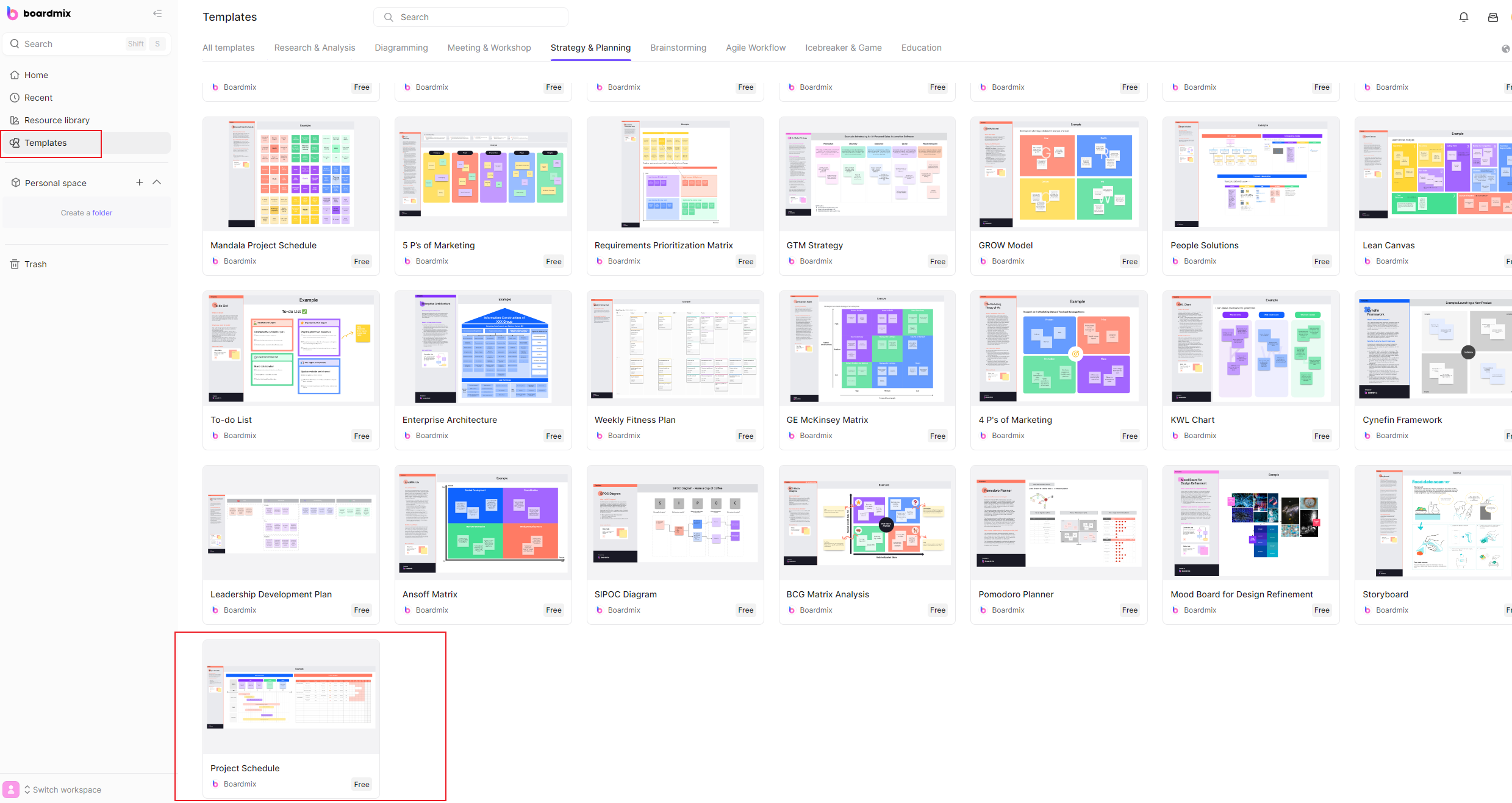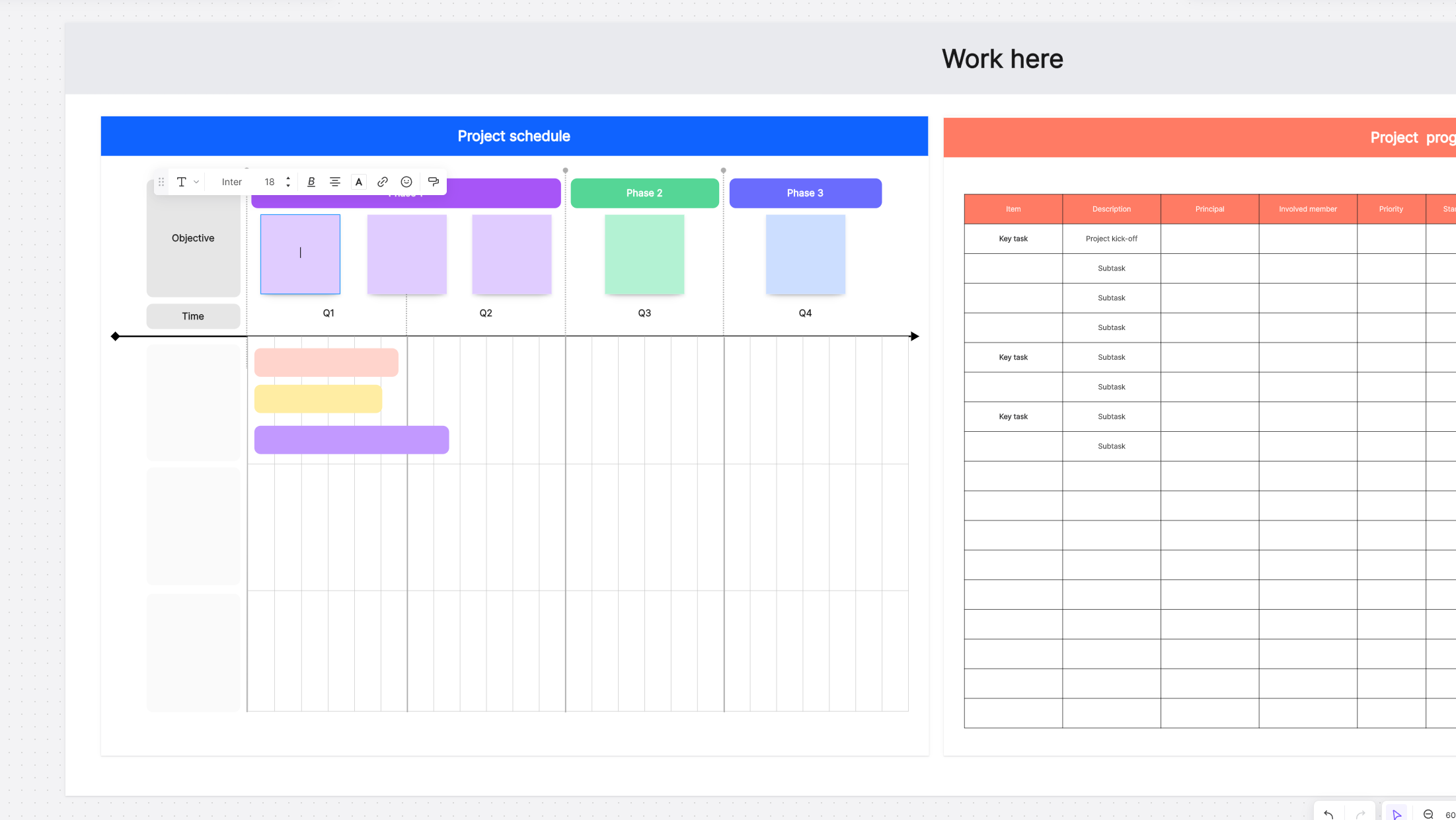Part 1. What Is a Project Schedule?
A project schedule is a strategic document that outlines the timeline, resources, tasks, and deliverables for a specific project. This essential tool serves as a comprehensive roadmap, guiding teams towards successful project completion. It's not just about listing out tasks; it's about organizing them in a way that reflects the complexity and sequence of operations necessary to achieve the project goals.
The schedule provides an overview of what needs to be done, by whom, and by when. It helps in ensuring efficient time management by setting clear expectations on task durations and deadlines. Moreover, it allows for tracking progress and performance against planned objectives, enabling timely identification of any deviations or potential risks.
A well-crafted project schedule is instrumental in fostering better communication within the team, facilitating coordination among different roles or departments involved in the project. It aids in resource planning and allocation while providing transparency into the process - all crucial elements for driving productivity and enhancing overall project success.
Part 2. What Should Be Included in a Project Schedule
A comprehensive project schedule is a meticulously crafted document that includes several key components:
- Project Milestones: These are significant events or stages in the project that mark substantial progress. They serve as checkpoints to review and assess the project's progression towards its objectives.
- Tasks: These are specific activities required to reach each milestone. Each task needs to be clearly defined with an understanding of what needs to be accomplished, ensuring everyone involved knows their responsibilities.
- Task Dependencies: This refers to how tasks relate and rely on each other. Understanding dependencies is crucial for sequencing tasks correctly. Some tasks can't start until others are completed, while some can proceed concurrently. Mapping out these relationships helps prevent bottlenecks and delays in the project timeline.
- Resources: This includes people, equipment, or materials needed for each task. A detailed resource plan ensures that all necessary resources are available when needed, thereby avoiding potential roadblocks during execution.
- Timeframes: This refers to the start and end dates for each task and the overall project. Setting realistic timeframes is essential for maintaining a steady pace of work and keeping the project on track. It also helps team members understand their deadlines and manage their workload effectively.
A comprehensive project schedule provides a clear picture of 'what' needs to be done, 'when' it should be done, 'who' is responsible for it, 'how' tasks interrelate, and 'what resources' are needed - all vital information for successful project execution.
Part 3. Steps to Create a Project Schedule
Creating an effective project schedule involves a series of systematic steps, each contributing to the development of an effective and comprehensive project schedule.
- Define Activities: This is the first step where you identify all tasks necessary for the project. It's about breaking down the project into manageable chunks or activities, each with a clear objective. The more detailed your task list, the easier it will be to manage and track progress.
- Sequence Activities: Once you have all tasks identified, the next step is to determine their order based on dependencies. Understanding how tasks interrelate helps in establishing a logical sequence of work. This step ensures that every task is scheduled in such a way that it doesn't disrupt or delay others.
- Estimate Resources: After sequencing activities, it's time to identify what resources are needed for each task. These could include human resources (skills, expertise), equipment, materials, etc. Accurate resource estimation helps in preventing over-allocation or under-utilization of resources.
- Estimate Timeframes: This involves determining how long each task will take to complete considering the complexity of the task and availability of resources. Remember to factor in potential risks or delays while estimating timeframes.
- Develop the Schedule: The final step is compiling all this information into a cohesive timeline - your project schedule! It should clearly depict task sequences, durations, resource assignments and milestones.
Part 4. How to Establish a Project Schedule with Boardmix
Boardmix is an innovative online whiteboard tool that revolutionizes the way you plan and organize your projects. Designed with a user-friendly interface, Boardmix offers a seamless planning experience by providing intuitive drawing templates that cater to various project needs. Whether you're brainstorming ideas, mapping out task dependencies, or tracking project milestones, Boardmix's versatile platform accommodates all these processes in one place.
Its unique blend of simplicity and functionality makes it an ideal choice for teams looking to streamline their planning process. With Boardmix, you can visualize your project timeline, collaborate with team members in real-time, and make adjustments on the fly - all contributing to a more efficient and effective project management process. Experience the future of project planning with Boardmix!
Key Features of Boardmix:
Collaborative Environment: Boardmix fosters a collaborative workspace, allowing team members to interact, share ideas, and work together on projects in real-time.
Variety of Templates: With Boardmix, you have access to a wide range of intuitive drawing templates designed for various project needs, enhancing your planning process.
Real-time Updates: Boardmix ensures everyone stays on the same page with real-time updates, making it easy to track changes and progress instantly.
Easy-to-use Interface: The user-friendly interface of Boardmix makes it simple for anyone to navigate and utilize its features effectively, regardless of their technical expertise.
To create a project schedule with Boardmix:
- Sign up or log in to Boardmix. Choose “project schedule” template or start from scratch.

- Add tasks and milestones onto your board.

- Link dependent tasks together visually.
- Assign resources and timeframes to each task.
- Share your board with team members for collaboration.
FAQs about Project Scheduling
1. What is the difference between a project plan and a project schedule?
A project plan is an overarching document detailing every aspect of the project while the schedule focuses specifically on timelines and task sequences.
2. Why do we need a project schedule?
A schedule ensures everyone understands their responsibilities, deadlines are met, resources are allocated efficiently, and potential issues are identified early.
3. What is the difference between project schedule and baseline?
The baseline is an initial snapshot of your plan used for comparison against actual progress; it helps identify deviations while the schedule guides day-to-day work.
Conclusion
Mastering your projects indeed starts with crafting an effective schedule, and this crucial process is significantly simplified with tools like Boardmix at your disposal! With its intuitive features and user-friendly interface, Boardmix not only makes scheduling a breeze but also enhances collaboration and productivity within your team. Experience the seamless integration of planning, tracking, and execution all in one place. Don't just manage your projects—excel at them! Try Boardmix today to witness a revolution in project scheduling firsthand!













